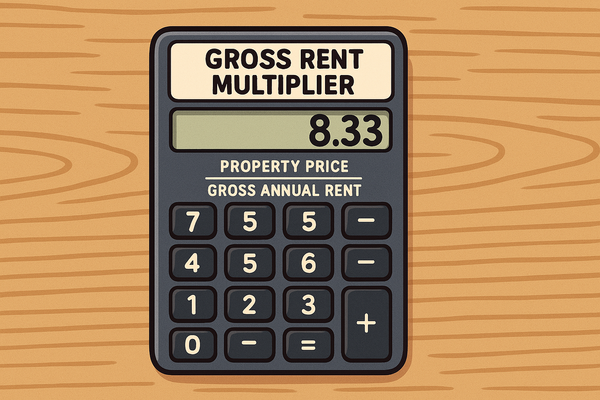The Property Manager's Guide to Lease Co-Applicants
A lease co-applicant is an individual who applies for a rental property alongside the primary applicant, assuming equal legal and financial responsibility for fulfilling all lease obligations

The Property Manager's Guide to Lease Co-Applicants
Did you know that nearly 40% of rental applications involve some form of co-application arrangement? As rental markets become increasingly competitive and financial qualifications tighten, understanding lease co-applicants has never been more critical for property managers and landlords seeking to minimize risk while maximizing occupancy.
In this comprehensive guide, we'll explore everything property professionals need to know about lease co-applicants - from definition and legal considerations to practical implementation strategies. You'll discover how properly managing co-applicant relationships can strengthen your tenant screening process, reduce financial risk, and create more secure rental agreements for your properties.
By the end of this article, you'll have actionable strategies to implement effective co-applicant policies that protect your properties while expanding your qualified applicant pool.
Definition and Background of Lease Co-Applicants
What Exactly Is a Lease Co-Applicant?
A lease co-applicant is an individual who applies for a rental property alongside the primary applicant, assuming equal legal and financial responsibility for fulfilling all lease obligations. Unlike cosigners who typically don't occupy the property, co-applicants generally have full rights to reside in the rental unit and share identical responsibilities for rent payment, property maintenance, and adherence to all lease terms (Rent.com).
This arrangement creates a powerful financial safeguard for property managers, as it legally binds multiple parties to the complete fulfillment of lease terms. When properly structured, co-applicant arrangements provide landlords additional security while helping applicants with insufficient qualifications secure housing.
Key Distinctions Between Co-Applicants and Cosigners
The property management industry often sees confusion between co-applicants and cosigners (sometimes called guarantors). Understanding these crucial differences helps property managers create appropriate agreements:
- Occupancy Rights: Co-applicants typically have the right to occupy the property, while cosigners generally don't reside in the unit but merely provide financial backing (Rent.com).
- Responsibility Timing: Co-applicants have immediate responsibility for lease obligations from day one, whereas cosigners typically only become financially liable if the primary tenant defaults.
- Screening Approach: Co-applicants undergo the same screening process as primary applicants since they'll be occupying the property, while cosigner screening focuses primarily on financial capacity.
- Legal Standing: Both co-applicants share equal legal standing in the lease agreement, creating joint and several liability where either party can be held fully responsible for the entire obligation.
Before finalizing any lease agreement with co-applicants, property managers should verify that the property meets all legal requirements by reviewing the Certificate of Occupancy Guide to ensure compliance with local regulations.
Historical Context and Evolution
The concept of lease co-application has evolved significantly over the past several decades. Originally most common in family situations (parents co-applying with adult children) or romantic partnerships, co-applicant arrangements have expanded to accommodate diverse living situations including roommates, friends, and even professionally matched housing partners.
As rental qualification standards have tightened following economic downturns, co-applicant arrangements have become increasingly common, particularly in high-cost metropolitan areas where meeting income requirements often necessitates multiple earners.
Significance in Property Management
Financial Risk Mitigation
For property managers, lease co-applicants represent a significant opportunity to reduce financial risk while maintaining occupancy rates. When two or more individuals share legal responsibility for lease obligations, the likelihood of complete default decreases substantially (Bay Management Group).
This arrangement provides particular value when:
- A primary applicant has borderline qualification metrics (credit score, income, rental history)
- The property commands higher-than-average rental rates for the market
- Local economic conditions create elevated risk for single-income households
Statistics show that properties with properly qualified co-applicants experience approximately 15% fewer instances of significant rent delinquency compared to similar properties with single applicants, highlighting the tangible financial benefit of these arrangements.
Expanding the Qualified Applicant Pool
Smart property managers recognize that co-applicant policies can dramatically expand the pool of qualified tenants. This proves especially valuable in:
- College towns where students may have limited income but reliable family support
- High-cost areas where combined household incomes make properties more accessible
- Markets with significant young professional populations still building credit histories
- Properties with strict qualification requirements that may exclude promising but financially developing applicants
By implementing thoughtful co-applicant policies, property managers can effectively "unlock" entire demographic segments that might otherwise fail to qualify individually, all while maintaining appropriate financial safeguards.
Understanding the nuances of different property types is essential when developing co-applicant policies, particularly for apartment homes where fair housing compliance is especially critical during the screening process.
Impact on Day-to-Day Operations
Beyond the initial application process, co-applicant arrangements influence numerous operational aspects of property management:
- Rent Collection: Multiple responsible parties increases payment reliability
- Communication Protocols: Property managers must establish clear channels with all responsible parties
- Maintenance Requests: All co-applicants typically have equal standing to request repairs
- Renewal Negotiations: Changes to co-applicant status may complicate renewal processes
- Conflict Resolution: Mediating disputes between co-applicants sometimes falls to management
Property managers who proactively address these operational considerations in their policies and agreements create more stable tenancies with clearer expectations for all parties.
Co-Applicant Qualification Enhancement
Practical Applications
Scenario 1: The Young Professional with Limited Credit History
Situation: A 24-year-old recent graduate with a promising career but limited credit history applies for a mid-range apartment. Their income meets requirements, but their credit score falls below your standard threshold.
Application of Co-Applicant Concept: Rather than rejecting the application outright, your leasing team suggests adding a parent as a co-applicant. The parent has excellent credit and stable income, though they won't reside in the unit (Rent.com).
Implementation Steps:
- Both applicants complete full rental applications
- Both undergo standard screening processes
- The lease clearly states both parties share full legal responsibility
- Special addendum clarifies occupancy expectations (parent won't occupy)
- Both parties sign all documents
Outcome: You secure a promising tenant with strong career trajectory while gaining additional financial security through the parent's co-application. The young professional builds rental history and credit, while you maintain appropriate risk mitigation.
Scenario 2: Roommates with Complementary Qualifications
Situation: Two potential tenants apply for your three-bedroom rental. One has strong credit but moderate income, while the other has excellent income but past credit challenges.
Application of Co-Applicant Concept: Neither applicant qualifies individually, but together their complementary strengths create a solid application package (Rent.com).
Implementation Steps:
- Evaluate combined financial strength against property requirements
- Verify that collective income meets minimum threshold (typically 3x monthly rent)
- Confirm both parties understand joint and several liability
- Document specifically that either party remains fully responsible regardless of roommate dynamics
- Consider requiring slightly higher security deposit given the credit concerns
Outcome: You convert two individually unqualified applications into one strong tenancy, expanding your applicant pool while maintaining appropriate financial safeguards.
Scenario 3: The Transitioning Renter
Situation: An applicant is relocating for a new job with excellent compensation but hasn't started the position yet, creating a temporary income qualification gap.
Application of Co-Applicant Concept: A family member co-applies to bridge the temporary qualification gap, with the understanding that they'll be removed from the lease after the primary applicant establishes employment history.
Implementation Steps:
- Document the temporary nature of the arrangement in a special lease addendum
- Establish clear criteria for lease modification (e.g., 6 months of on-time payments plus employment verification)
- Outline the process for evaluating the lease modification request
- Create a streamlined pathway to remove the co-applicant when conditions are met
- Ensure all parties understand that any lease modification requires landlord approval
Outcome: You secure a promising long-term tenant by accommodating a temporary qualification challenge, demonstrating flexibility while maintaining appropriate risk management.
For landlords considering whether to manage these complex co-applicant scenarios themselves, the article Should I Manage My Own Rental Property? provides valuable insights on the cost/benefit analysis of handling tenant screening and compliance oversight.
Legal and Compliance Considerations
Joint and Several Liability
The cornerstone of co-applicant arrangements is the legal principle of joint and several liability. This means:
- Each co-applicant is individually responsible for the entire lease obligation (Rent.com, Renting in Missoula)
- The landlord can pursue either party for the full amount of any damages or unpaid rent
- One co-applicant's payment fulfills the obligation for both parties
- Legal action can be taken against either or both parties in case of default
Property managers must ensure lease agreements clearly establish this liability structure, avoiding language that might suggest divided or proportional responsibility.
Fair Housing Compliance
When implementing co-applicant policies, property managers must maintain strict adherence to Fair Housing regulations (HUD):
- Screening criteria must be applied uniformly to all applicants and co-applicants
- Co-applicant options must be offered consistently to avoid discrimination claims
- Accommodation requests related to co-applicant arrangements must be handled according to Fair Housing guidelines
- Documentation of screening decisions becomes particularly important when evaluating complex co-applicant scenarios
The Department of Housing and Urban Development (HUD) emphasizes that screening processes must avoid disparate impact on protected classes, making standardized co-applicant policies essential.
Geographic Variations in Requirements
Co-applicant regulations vary significantly across jurisdictions:
- Some localities limit how many unrelated co-applicants can legally occupy a unit
- Certain states have specific documentation requirements for non-occupant co-applicants
- Municipal regulations sometimes impose additional disclosure requirements (Loudoun.gov)
- Public and affordable housing programs often have specialized rules regarding co-applicants (HUD)
Property managers operating across multiple jurisdictions should develop region-specific co-applicant policies that account for these variations while maintaining core risk management principles.
Documentation Essentials
Proper documentation forms the foundation of legally sound co-applicant arrangements:
- Applications should clearly identify co-applicant status and relationship (Oklahoma.gov, UNT)
- Lease agreements must explicitly establish joint and several liability
- Addenda should address any specialized arrangements (non-occupancy, temporary status)
- All adult occupants should execute the lease regardless of financial responsibility (HUD)
- Records retention policies should account for potential future disputes
Many property managers develop specialized co-applicant addenda that emphasize key responsibilities and clarify expectations, enhancing the standard lease documentation.
Understanding the legal grounds for handling co-applicant defaults is crucial, as outlined in the Reasons to Evict a Tenant guide, which details the legal basis for eviction if joint tenants violate lease terms.
Best Practices for Property Managers
1. Develop Clear Co-Applicant Qualification Standards
Implementation Steps:
- Establish minimum combined income requirements (typically 3-4x monthly rent)
- Define minimum credit thresholds for at least one party (BiggerPockets)
- Create guidelines for complementary qualification scenarios
- Document acceptance criteria for non-occupying co-applicants
- Train staff on consistent application of these standards
Tools and Resources:
- Property management software with co-applicant screening capabilities
- Industry association qualification guidelines
- Expert consultation for market-specific standard development
2. Create Transparent Communication Protocols
Implementation Steps:
- Develop educational materials explaining co-applicant responsibilities
- Establish clear documentation showing joint liability
- Create scripts for explaining co-applicant arrangements to prospects
- Implement systems for communicating with all responsible parties
- Design notification protocols that respect privacy while maintaining accountability
Tools and Resources:
- Co-applicant responsibility fact sheets
- Tenant portal systems with multi-user access
- Communication logs accessible to all staff
3. Implement Thorough Screening Procedures
Implementation Steps:
- Screen all co-applicants with identical rigor (Apartments.com, BiggerPockets, TurboTenant)
- Verify employment and income for all parties
- Check rental history for each co-applicant
- Conduct background checks on all applicants regardless of financial qualification
- Document screening results comprehensively
Tools and Resources:
- Integrated screening services with multi-applicant capabilities
- Standardized verification forms for employers and previous landlords
- Electronic record-keeping systems for documentation
4. Establish Clear Lease Modification Protocols
Implementation Steps:
- Create standardized processes for adding/removing co-applicants
- Develop criteria for approving co-applicant changes
- Design forms specifically for co-applicant modifications
- Train staff on proper implementation of modification processes
- Establish appropriate fees for lease modifications
Tools and Resources:
- Co-applicant release forms
- Re-qualification worksheets
- Lease amendment templates
5. Design Specialized Collection Strategies
Implementation Steps:
- Create contact protocols for delinquent co-applicant scenarios
- Develop scripts for addressing partial payments
- Establish escalation procedures specific to co-applicant situations
- Train staff on joint liability enforcement
- Document collection efforts meticulously
Tools and Resources:
- Multi-party payment tracking systems
- Co-applicant-specific collection notice templates
- Legal counsel familiar with co-applicant enforcement
For property managers developing institutional approaches to co-applicant screening, the Build-to-Rent Communities Guide offers valuable insights on modern tenant selection strategies in large-scale rental developments.
Related Concepts
Cosigners and Guarantors
While distinct from co-applicants, cosigners serve a complementary role in rental risk management. Understanding the differences helps property managers deploy the right tool for each situation:
- Financial Responsibility: Both bear financial responsibility, but cosigners typically only become liable upon primary tenant default (Rent.com, Apartments.com, Renting in Missoula)
- Occupancy Rights: Unlike co-applicants, cosigners generally have no occupancy rights
- Screening Focus: Cosigner screening emphasizes financial capacity above all other factors
- Documentation: Specialized guarantor agreements often replace standard lease execution
Property managers with comprehensive tenant qualification systems typically maintain separate policies for co-applicants and cosigners, deploying each strategically based on applicant needs.
Lease Guaranty Agreements
For institutional housing (student housing, corporate rentals) lease guaranty agreements offer an alternative to traditional co-applicant arrangements:
- Corporate Guarantors: Companies sometimes guarantee leases for relocating employees
- Institutional Guarantors: Universities occasionally provide guarantees for international students (USF)
- Third-Party Guaranty Services: Specialized companies now offer lease guaranty services for a fee
These arrangements require specialized documentation and verification processes distinct from standard co-applicant procedures.
Roommate Agreements
While not typically part of formal property management documentation, roommate agreements complement co-applicant leases by addressing:
- Internal rent division
- Utility responsibility allocation
- Household duty distribution
- Conflict resolution procedures
- Replacement roommate processes
Many professional property managers provide roommate agreement templates as a courtesy, helping prevent internal disputes that might eventually impact tenancy.
Tenant Screening Systems
Co-applicant management represents one component of comprehensive tenant screening systems that typically include:
- Credit evaluation protocols
- Income verification standards
- Rental history review processes (Apartments.com)
- Background check procedures
- Occupancy standard enforcement
Property managers should integrate co-applicant policies into broader tenant qualification frameworks rather than treating them as exceptional cases.

Common Questions from Property Managers
When should I require a co-applicant rather than reject an application?
Consider requiring a co-applicant when the primary applicant shows promise but falls short in specific qualification areas. Good candidates for co-applicant arrangements include:
- Applicants with strong income but limited credit history
- Prospects with steady employment but recent credit challenges
- Individuals with excellent qualifications except for one specific area (BiggerPockets)
- Applicants with strong rental history but transitional employment
The best co-applicant arrangements complement specific weaknesses rather than attempting to salvage fundamentally unqualified applications.
How do I handle situations where co-applicants want to part ways mid-lease?
This common challenge requires clear protocols:
- Maintain that both parties remain legally responsible regardless of personal relationships (Rent.com, Renting in Missoula)
- Offer lease assignment options if qualified replacement co-applicants are available
- Provide clear re-qualification criteria for remaining tenants wishing to assume sole responsibility
- Develop standardized forms for releasing co-applicants when appropriate
- Train staff to avoid involvement in personal disputes while maintaining property interests
The lease should explicitly state that relationship changes don't affect legal responsibility, reinforcing this during the application process.
Should co-applicants receive individual or joint statements and communications?
Best practices suggest:
- Lease compliance notices should be sent to all responsible parties
- Maintenance communications should go to all occupants
- Financial statements should be accessible to all financially responsible parties
- Default notices must be delivered to all co-applicants
- Renewal offers should be presented jointly
Property management software increasingly offers customizable communication protocols for co-applicant scenarios, streamlining this process.
How does a co-applicant arrangement affect security deposit handling?
Property managers should:
- Collect a single security deposit for the unit regardless of co-applicant arrangement
- Make clear that the deposit secures the obligations of all parties jointly
- Establish that deductions affect all co-applicants equally
- Create procedures for deposit allocation if co-applicants separate
- Follow state-specific regulations regarding deposit handling and itemization
Many property managers require co-applicants to designate a single recipient for any deposit refunds, simplifying administration while leaving internal allocation to the co-applicants.
What documentation should I retain specifically for co-applicant situations?
Beyond standard lease documentation, maintain:
- Individual application materials for each co-applicant (Oklahoma.gov, UNT)
- Verification records for all parties
- Specific acknowledgments of joint liability
- Records of any occupancy vs. financial responsibility distinctions
- Communication logs with all parties
Electronic document management systems with appropriate permission structures facilitate proper record-keeping for these complex arrangements.
Conclusion and Resources
Key Takeaways
Lease co-applicants represent a powerful tool in the property manager's risk management arsenal. When properly implemented, co-applicant arrangements:
- Expand the qualified applicant pool without increasing default risk (Bay Management Group)
- Provide additional financial security for property owners
- Create clear legal frameworks for shared rental responsibilities
- Accommodate diverse living arrangements and financial situations
- Balance tenant accessibility with appropriate risk management
Property managers who develop thoughtful, consistent co-applicant policies position themselves to maximize occupancy while maintaining strong financial performance.
Recommended Resources
For property managers seeking to optimize their co-applicant processes, these resources provide valuable guidance:
- National Apartment Association's Lease Compliance Guide - Comprehensive framework for lease structuring including co-applicant best practices
- Fair Housing Institute's Screening Compliance Training - Specialized education on legally compliant screening for complex applicant scenarios
- American Apartment Owners Association Forms Library - Industry-standard documents including specialized co-applicant addenda
- Institute of Real Estate Management's Risk Management Course - Professional education on balanced risk approach including co-applicant strategies
- LegalZoom's Landlord Protection Forms - Affordable legal templates specifically addressing joint liability situations
Final Thoughts
As rental markets continue to evolve, sophisticated co-applicant policies will increasingly differentiate successful property management operations. By implementing structured approaches to these arrangements, property managers can simultaneously expand their qualified applicant pool and enhance financial security - a rare win-win in the risk-reward equation of rental property management.
The most successful property managers view co-applicant arrangements not as exceptional accommodations but as standard components of a comprehensive tenant qualification system, applying consistent standards while maintaining appropriate flexibility for unique circumstances.
We encourage you to review your current co-applicant policies against the best practices outlined in this guide, identifying opportunities to strengthen your approach while maintaining fair housing compliance and operational efficiency.






